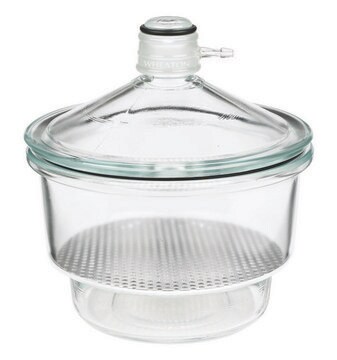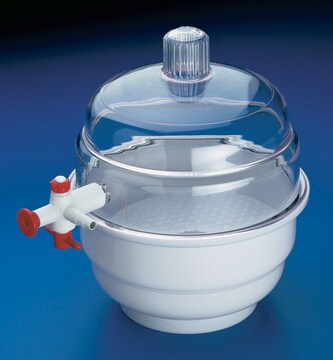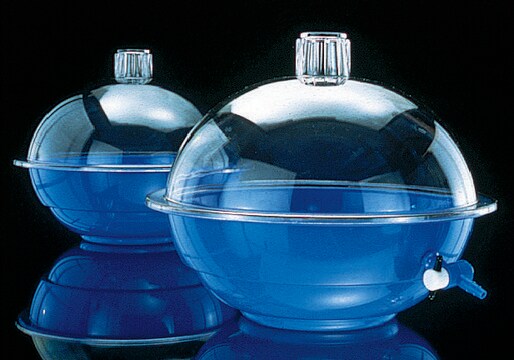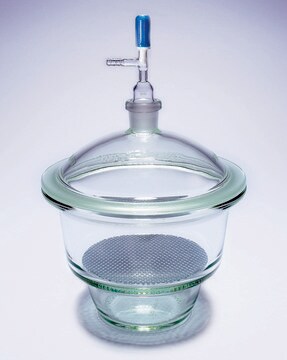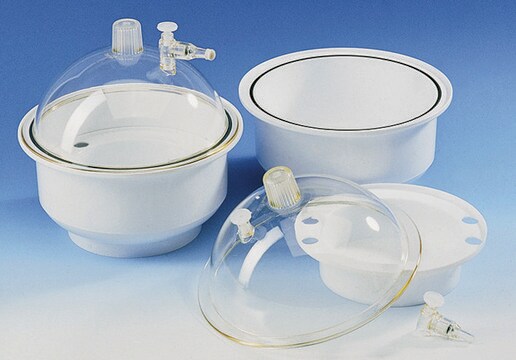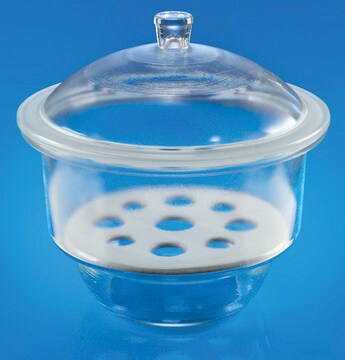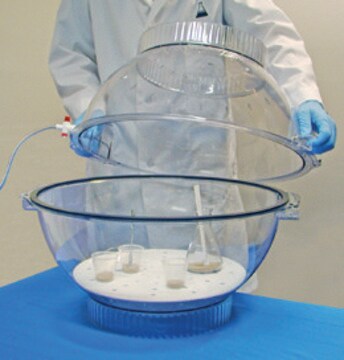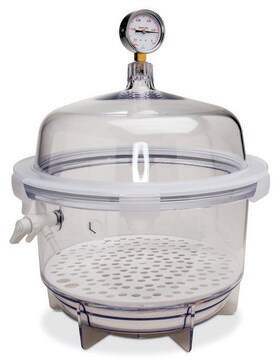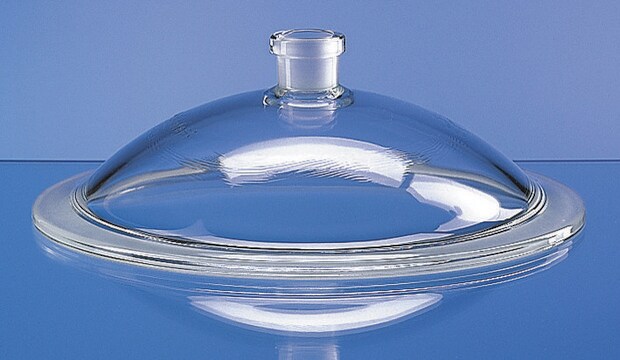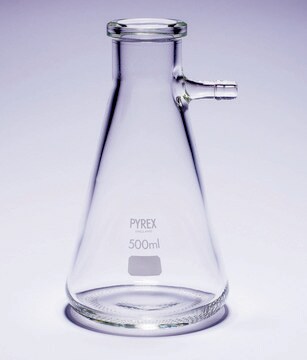Z354074
Nalgene® vacuum desiccator
with stopcock, Overall H 262 mm
Synonym(s):
moisture extraction device, sample protection unit
Sign Into View Organizational & Contract Pricing
All Photos(1)
About This Item
UNSPSC Code:
41104510
NACRES:
NB.43
Recommended Products
material
polycarbonate cover (250 mm diam.)
feature
autoclavable: no
packaging
pack of 1 ea
manufacturer/tradename
Nalgene® 5310-0250
O.D. × I.D.
330 mm × 246 mm , including stopcock
Overall H
262 mm
Looking for similar products? Visit Product Comparison Guide
Related Categories
General description
- Clear PC cover with blue bottom
- Vacuum connection on body has PTFE stopcock, accepts 1/4 in. I.D. tubing.
- Max clearance above plate: 143 mm
Nalgene vacuum desiccators have a transparent polycarbonate (PC) cover and polypropylene (PP) base which will not shatter or implode at full vacuum when used according to instructions packed with the product. The desiccator body is impervious to all solid desiccants, including acids and alkalies. Do not use concentrated acids as desiccants.
Straight-bore design eliminates stopcock leakage. No gaskets are necessary, and no need to draw a vacuum to make cover airtight - only grease is needed. Recessed rim on cover keeps grease off bench-top when cover is set down. Desiccator takes any standard 230 mm desiccator plate such as Z360422. The plate for the large size is sold separately.
Straight-bore design eliminates stopcock leakage. No gaskets are necessary, and no need to draw a vacuum to make cover airtight - only grease is needed. Recessed rim on cover keeps grease off bench-top when cover is set down. Desiccator takes any standard 230 mm desiccator plate such as Z360422. The plate for the large size is sold separately.
Legal Information
Nalgene is a registered trademark of Thermo Fisher Scientific or its subsidiaries
Choose from one of the most recent versions:
Certificates of Analysis (COA)
Lot/Batch Number
Sorry, we don't have COAs for this product available online at this time.
If you need assistance, please contact Customer Support.
Already Own This Product?
Find documentation for the products that you have recently purchased in the Document Library.
Customers Also Viewed
Khaled M A Abdel-Raouf et al.
Biology, 10(6) (2021-07-03)
The development of robust skeletal muscle models has been challenging due to the partial recapitulation of human physiology and architecture. Reliable and innovative 3D skeletal muscle models recently described offer an alternative that more accurately captures the in vivo environment
Our team of scientists has experience in all areas of research including Life Science, Material Science, Chemical Synthesis, Chromatography, Analytical and many others.
Contact Technical Service